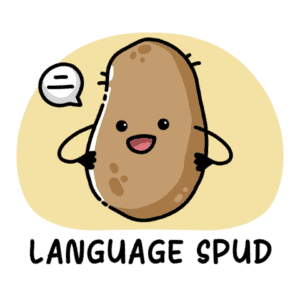
I’ve been learning Chinese for quite some time, and although I’m not fluent yet, you might be surprised how far I’ve come using my phone as my primary language learning tool.
I’ve lived in China for over 7 years, and I’ve sampled what feels like every resource available… I mean, I haven’t, but I’ve tried absolutely loads.
In fact, one could argue I’ve experimented too much in trying to find the perfect app, I would have learned more Chinese by simply knuckling down and studying using the most rudimentary materials.
Due to my insatiable appetite to find shortcuts for every endeavour in my life, I’m in a perfect position to tell you which apps are the most effective if you’re trying to learn basic Chinese.
Getting Started | Learning Characters with SRS (Spaced Repetition Software) | Reading Apps | Writing Characters | Speaking Apps | Sentence Mining Apps | Listening Apps | Video Apps | The HSK | Honourable Mentions
Apps for Getting Started
I can safely say that there is no app out there that will take care of your every Chinese learning need, and none are good enough to make you abandon all others.
To learn Mandarin faster and more holistically, you’ll need a collection of apps on your phone (as well as learning materials that aren’t apps).
However, there are a few apps aimed at absolute beginners that try to deliver a Chinese language learning program covering all of the very basics, and they’re all fairly similar.
Don’t expect any of the following apps to take you beyond a beginner stage. They’re sort of like ‘no-commitment-gentle-intro-test-to-see-if-you-like-learning-languages’ kind of apps.
At the most, they will teach you the following:
- The first few hundred all-important words and characters.
- Basic grammar and phrases.
- A general introduction to the sights and sounds of Mandarin Chinese.
Hello Chinese

This app is neater and tidier than Duolingo with better audio and structure, but not quite as complete as ChineseSkill.
FREE (with optional paid upgrades)
ChineseSkill

Almost identical to Hello Chinese in every way, but with more detailed learning content. This app is the best of the three.
FREE (with optional paid upgrades)
Duolingo

A rather famous and popular app that provides courses for many different languages. Duolingo’s European language courses are better, but could still do a lot worse with a free app.
FREE (with optional paid upgrades)
I have written a more in-depth guide and review of Duolingo which you can find here.
You can check out other articles which help newbie learners below:
- How To Learn Mandarin From Scratch (From a Guy Who’s Done It)
- Learning Chinese: The Best Textbooks For Beginners
- The 24 Best Mandarin Chinese Study Resources for Beginners
- Learning Chinese: 15+ Listening Tools Perfect for Beginners
- Can I Learn a Language Completely by Myself?
- A Beginner’s Guide to Chinese Calligraphy | Tools, Styles, and Tips!
- Can you Learn Chinese by Studying Only 5 Minutes a Day?
Learning Characters With SRS (Spaced Repetition Software)
The acquisition of new characters is perhaps the biggest battle when learning Chinese as a beginner.
As many advanced learners might tell you, Chinese grammar is simple enough (compared to other European languages) with no tenses, gender pronouns, or conjugation of verbs. The laborious yet uncomplex task of learning Chinese characters is where much of your energy will be channeled.
Very simply put, every word in Chinese is represented by a picture or combination of pictures. Not all words have completely unique characters, as many characters are combined to make new words.
SRS should NOT be your only method of learning characters. However, it does help speed up the process of learning them.
Anki

Probably the most popular flashcard app, Anki gives you more customisation options than any other SRS flashcard app. There seem to be endless ways to modify your decks and cards on Anki, and there are plenty of pre-made wordlists available to import from the Anki website.
– FREE for Android
– $25 for iOS
Pleco

Pleco is a comprehensive, free Chinese dictionary with some other very useful optional paid add-ons (including flashcards). Seriously, you will catch me ranting and raving about Pleco many times all over this site. The basic bundle for $29.99 includes all kinds of goodies and is a worthy investment.
– Basic Bundle: $29.99 (recommended)
– Professional Bundle: $59.99
Memrise

Slightly more gamified than the other two apps, but it’s completely free and there are so many pre-made word lists on the database for you to choose from, including those from all of the HSK word lists and popular textbooks.
– FREE (Optional paid upgrades)
Other articles I have written which should help with your quest to make sense of Chinese characters:
- Simplified and Traditional Chinese Characters | Which Should I Learn?
- Can I Learn Mandarin Chinese Without Learning Characters?
- What are Radicals and Components in Chinese Characters?
- How to Lookup Chinese Characters you Don’t Know
- The 5 Best Apps For Learning To Write Chinese Characters
- How Do I Type Chinese Characters On My Phone and Computer?
- Learning Chinese Characters: 5 Effective Strategies
Reading Apps
Reading should be at the heart of your studies when it comes to learning Mandarin Chinese.
It’s one of the best forms of comprehensible input (along with listening) and through reading, you gain repeated exposure to grammar patterns, words, and so much of the language in general.
Finding reading material is difficult for beginners, which is why I recommend graded readers and the following apps.
The Chairman’s Bao

The Chairman’s Bao app (TCB) is an online newspaper, with a huge database of articles divided into various HSK levels. TCB publishes articles on very diverse subjects which are written in Mandarin by native Chinese professors. All you’ve got to do is choose the stories which match your interests and Chinese level.
– $10/1 month
– $25/3 months
– $45/6 months
– $80/12 months
Du Chinese
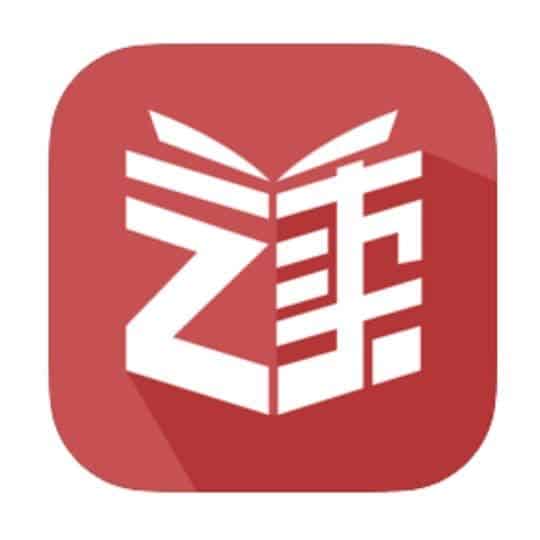
Du Chinese is very similar to The Chairman’s Bao. However, Du Chinese doesn’t just stick to news articles – there are loads of short stories and practical lessons on there. Another thing I really like about Du Chinese is that within the app you can get line-by-line translations of your text.
– $14.00/1 month
– $79.99/6 months
– $119.99/12 months
Pleco

I told you I loved Pleco! However, it’s for good reason. One of my favorite tools within the Pleco app is the document reader. Simply copy and paste any Chinese text into the document reader to read it. By pressing on words you don’t know, Pleco’s dictionary will highlight and translate them instantly.
– Basic Bundle: $29.99 (recommended)
– Professional Bundle: $59.99
Here you can check out my recommendations for graded readers.
Apps for Writing Characters
Handwriting Chinese characters is by far the hardest thing I’ve ever attempted, and I’ve tried to lick my own elbow…
I have a lot of respect for all Chinese people and any non-native that undertakes the mammoth journey of writing Chinese.
Along with many other learners of Mandarin, I believe that learning to write characters is the most time-intensive aspect of learning Mandarin, and it carries with it the least reward.
But just because I’m lazy when it comes to writing characters by hand, it doesn’t mean you should be as well.
If you’re trying to learn how to write characters, the best app I’ve come across by a country mile is…
Skritter
The interface is great, and no other handwriting app comes close. You can import wordlists, choose one from the extensive database, or manually create your own. It uses spaced repetition and also provides stroke order diagrams, as well as other subtle features such as stroke suggestions and tweaks to the character presentation.
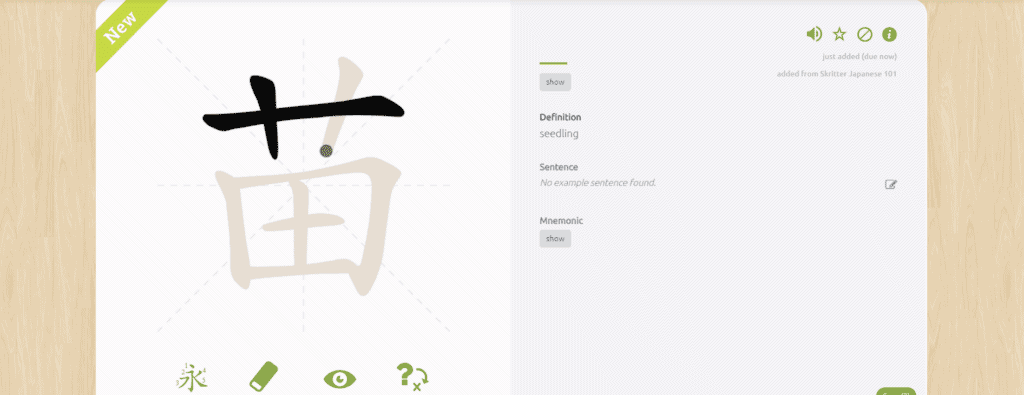
Although I’m a slacker when it comes to writing characters, I was told something by one of my first Chinese teachers back in the day that has stuck with me ever since:
‘Once you’ve learned to write a character by hand, you’ll never, ever forget it.’
This is true… but I still can’t be bothered.
And if you really want to learn to write but can’t afford the price tag of Skritter, you can pick up plenty of thick pads of Chinese writing paper for a few RMB at any stationery store in China or on Amazon.
Pleco has already been mentioned for its flashcard tool, but it also has a handwriting tool included in the basic bundle. However, keep in mind that it has virtually none of the bells and whistles that Skritter has.
– $14.99/1 month
– $59.99/6 months
– $99.99/12 months
– $179.99/24 months
For a more detailed review of Skritter and a more in-depth guide to writing characters, check out the following:
- Skritter Review | The Most Time-Efficient Way to Learn to Write Characters
- The 5 Best Apps For Learning To Write Chinese Characters
Speaking
Many people will argue that the best way to get better at speaking Chinese is to get yourself out there and approach every random Chinese person you see and start a conversation.
Although this will improve your Chinese slightly, there is a more respectful way of speaking to people who actually want to speak to you in return.
Pimsleur

Previously, Pimsleur consisted only of insanely expensive audio files that I wouldn’t have recommended if you paid me. These days, Pimsleur has a subscription service… Which is still very expensive. Basically, Pimsleur is very good for beginners who want to get comfortable speaking right from the get-go. You will be guided through audio-only lessons and you will build on your Chinese knowledge by repeating progressively harder sentences out loud. Pimsleur is good, but it’s over-priced.
– $19.95/month subscription
iTalki

iTalki is an app where you can search for Chinese teachers to give you live video lessons. Video introductions and reviews of Chinese teachers and native speakers will help you decide on which teacher is best for you. When using iTalki you’ll still have to do your due diligence. Not all teachers are the same, and it might take a few classes with the same teacher to form a good learning relationship. Lessons usually cost between $10-$30 an hour depending on the experience and reputation of your teacher.
$10 – $40 an hour for a teacher depending on experience, level, English level, etc.
Hello Talk

HelloTalk is perfect for people who have reached a basic level of Chinese but don’t have access to native speakers who would like to have a fruitful language exchange. HelloTalk offers also offers an instant translator which is very useful when you’re chatting in a language you don’t know very well. I’ve used Hello Talk a lot even though I live in China. It’s a great tool to build up your confidence in Chinese and it basically acts as an online language exchange.
FREE (paid upgrade to access video call function)
Need more help with Mandarin pronunciation? Check out the following articles:
- 7 Tips for Drastically Improving Your Pronunciation of Mandarin Chinese
- 25 Mandarin Chinese Tongue Twisters to Practice Pronunciation!
Sentence Mining
Sentence mining is a very useful and increasingly popular technique for learning Mandarin Chinese.
Basically, instead of studying individual characters and words through SRS, you’ll be learning full sentences instead. This gives you the added advantages of learning new words in context, as well as being repeatedly exposed to grammar patterns.
There are two diverging methods when it comes to studying sentence mining:
- Volume: study 10,000 random sentences to give you a pretty solid base of the language. See the above resources for this kind of thing, as you’re unable to make your own sentence flashcards in both Glossika and Speechling.
- Tailored: create your own sentence cards based on your own study plan. For example, taking sentences from a textbook you’re learning so you can really drill that stuff into your brain. If you’d prefer to study this way, see below:
If you’re going with the first method, I suggest Speechling. If you’re going with tailored sentences, I’d suggest going with Anki.
Speechling

Speechling does everything that Glossika does, except it’s completely free. It’s an app, too. Sure, the interface is a bit messier and the app is sometimes buggy, but it’s free. You can also get your own private tutor through the paid version of Speechling.
FREE (paid upgrade for your own private tutor)
Clozemaster

Clozemaster markets itself as an app where you learn new words in the context of sentences. Yes, this is basically sentence mining. The interface makes the app look like an arcade game from the eighties. You can learn the HSKs with Clozemaster and if you upgrade to the paid version (reasonably priced) you can study offline.
– $8/month
– $60/year
– $140/lifetime membership
Anki

An excellent flashcard app and really worth it if you’re going to make sentence mining a part of your study plan. So many customisation options available, it really is the best for those who prefer things being set up in their own way.
– FREE for Android
– $25 for iOS
Listening
Along with reading, listening should form the bulk of your Chinese studies. I’ve spoken in other posts on this site about listening in Chinese being objectively difficult compared to other languages.
The solution?
A lot of practice.
Intermediate and advanced learners of Chinese have access to a lot of materials to suit their level. Apps like QQ Music and Youku provide as much audio and video that as they want, at a level they’ll be able to understand.
For beginners, this doesn’t make much sense unless you’re listening passively. If you want your listening practice to be more productive, you’ll need short, structured audio lessons that you can actually digest and learn from.
ChinesePod

Chinesepod is up there as the best listening resource for learners of all levels. The format of each podcast is a conversation between two native speakers which is then broken down into English so you understand every little piece of it. From upper intermediate onwards, everything is in Mandarin Chinese. You can check out loads of example lessons on the Chinesepod YouTube channel. Here’s an example lesson!
Basic Learner – $14/month (Recommended)
Premium Learner – $29/month
ChineseClass101

ChineseClass101 works in much the same way as ChinesePod. However, I find the learning content much more varied in terms of style, but not in content. The beginner courses are excellent and there are a lot of different pricing options. It’s also worth mentioning that the app for ChineseClass101 is free, whereas the app for ChinesePod is only available for premium members. Take a look at ChineseClass101’s YouTube channel for sample lessons.
Basic – $8/month
Premium – $25/month
Premium+ – $47/month
(Cheaper long-term subscriptions)
Audio Stretch

Audio Stretch doesn’t provide Mandarin learning content, but it’s incredibly useful for practicing listening. Simply import any audio file into the app and you have the option of slowing down audio to practice shadowing, or you can speed things up if you fancy a challenge. You can also add playback loops to really zone in on difficult parts of the audio. These are very helpful functions for making listening practice more effective.
Audio Stretch Lite – FREE
Audio Stretch PRO – $9.99
Video
Video is an incredibly effective method for language learning.
Think about it.
You’re listening, reading (with subs), and viewing your target language in context, all at the same time.
Probably the best thing about most Mandarin video content is that most of the time it comes with Chinese subtitles.
This is something you’ll notice when watching Chinese movies and TV shows.
YouTube

OK, this might seem a bit obvious, but a lot of the best TV shows and movies are already available for free on YouTube.
If you’re looking for a lot more Mandarin learning content on YouTube, check out the articles below. I have compiled a fairly big list of YouTube channels that are perfect for learners at all levels.
- 57 of the Best YouTube Channels for Learning Mandarin Chinese
- Learn Mandarin with Film | 101 Awesome Chinese and Taiwanese Movies
- 101 TV Shows for Chinese Learners | Drama, Action, Comedy, and More!
The HSK
The HSK stands for Hanyu Shuiping Kaoshi (汉语水平考试), which is translated as the Chinese Proficiency Test, is the standardized test of Mandarin in Mainland China for non-native speakers.
It seems to be the way that most foreigners in China gauge their progress in Mandarin and flex with each other online and at parties.
HEADS UP! The HSK is currently going through some changes and the new system looks like it’ll be launched in 2022. An extra 3 levels will be added (7, 8, and 9). However, the current tests for levels 1-6 will remain unchanged for the foreseeable future. If you’re still confused, check out the video below that explains it all quite well.
SuperTest – The HSK App
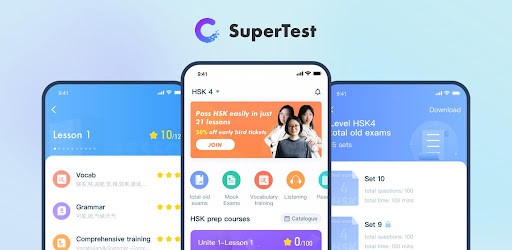
If you’re preparing for the HSK exam or learning Mandarin using HSK materials, it makes sense that you’d buy the textbooks.
However, if you want to study HSK material from your phone, the SuperTest app will provide you with everything related to the HSK.
And when I say everything, I really do mean everything.
I’d even go as far as to say you don’t need the textbook if you have the app, but you’ll probably still want to give your eyes a break from a screen.
With the SuperTest app you can take advantage of the following:
- Vocab practice.
- Grammar practice.
- Reading, writing, and listening practice.
- Special training and exercises for each question type.
- Real and mock HSK exams.
It’s a paid app, but I think the pricing is fair if you choose to work through a lot of HSK materials quite quickly.
– 1-month subscription: £15.99
– Lifetime VIP: £94.99
– 12-month subscription: £64.99
For more information about The HSK, check out the following:
Honourable Mentions
Chinese Grammar

The rumours are true: grammar is probably the simplest aspect of learning Mandarin Chinese. However, it’s still an area that needs your attention. In the Chinese Grammar app, you’ll find clear and well-presented grammar lessons illustrated with plenty of examples. There are more than 100 lessons available for beginner to advanced learners and they are available to learn offline.
FREE
Hi Native

An app where native speakers correct your written passages. As you become more comfortable with a new language, you tend to be more creative with it. However, there’ll be a million occasions where you’ll be unsure whether you’re saying stuff correctly. Regular correction and feedback are important in language learning, and you can get both with Hi Native.
$5.68/month paid monthly , or $4.96/month paid annually (a $59.63 payment).
Learn Chinese – Listening and Speaking
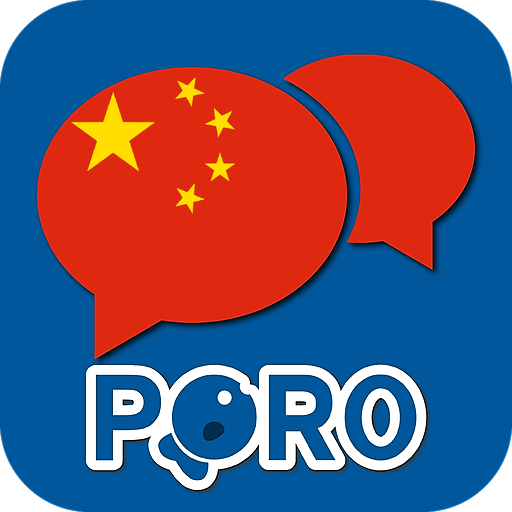
Learn by listening to conversations on different topics. This is a very effective and underrated method of language learning, and mimicking conversations is particularly suited to those with an ‘inner actor’. In fact, I’m surprised there aren’t more learning materials out there that adopt this style of material. An underrated app that is unfortunately only available on Android.
– FREE (way too many ads)
– $30 to go ad-free
Conclusion
So, there you have it.
A complete guide to the best apps for learning Mandarin Chinese from someone who has spent an inordinate amount of time trying new apps instead of actually learning Mandarin Chinese.
Remember that although using apps can actually take you quite far with Mandarin, you’ll need to branch out with your learning materials to reach the highest heights.
Check out the articles below to learn more!
Further Reading
- 100+ MANDARIN LEARNING RESOURCES: THE FASTEST WAY TO FLUENCY
- THE 24 BEST MANDARIN STUDY RESOURCES FOR BEGINNERS
- 14 REASONS WHY YOU SHOULD LEARN MANDARIN CHINESE
- IS IT EASY TO LEARN MANDARIN CHINESE?
- THE ULTIMATE GUIDE TO LEARNING MANDARIN CHINESE IN CHINA
